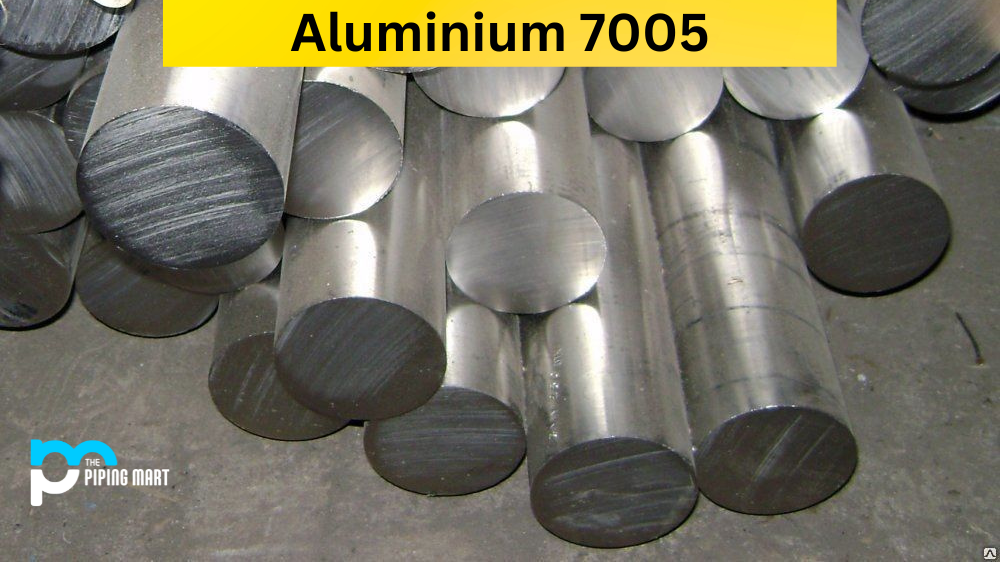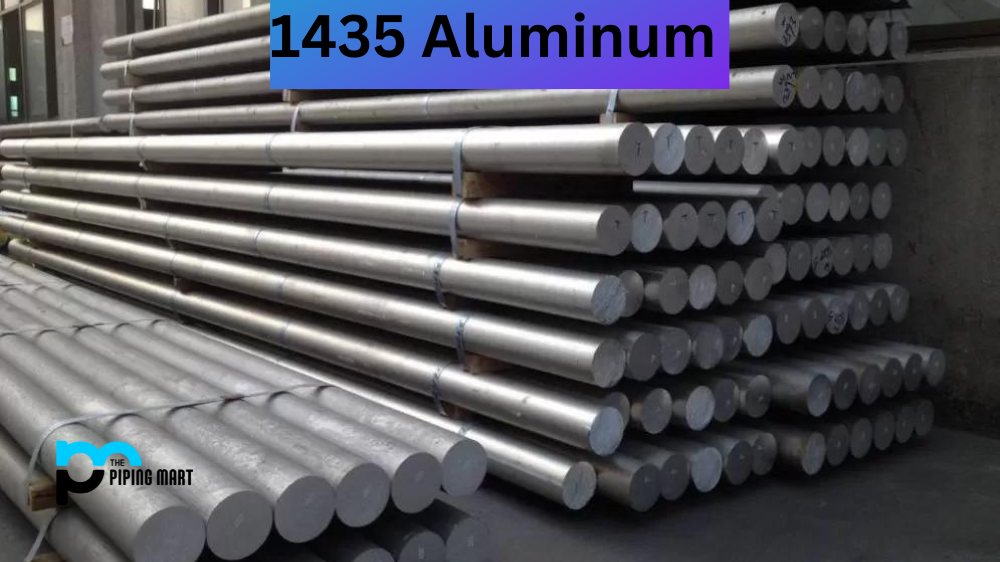ASTM B166 is a nickel-chromium alloy that offers excellent resistance to oxidation and corrosion at high temperatures. It is produced by Special Metals, Inc., and its applications extend to industries such as aerospace and oil & gas extraction. With its wide range of properties and uses, it’s important to understand the composition, chemical properties, mechanical properties, physical properties, welding capabilities, heat treatment, machining characteristics, and more in order to properly use Inconel 601. Let’s look further into this useful alloy.
What is Inconel 601?
Inconel 601 is a combination of nickel-chromium alloy that makes it a very desirable material in various industries. Used mostly in the aerospace and chemical processing sectors, Inconel 601 has proven to be a metal of great strength and heat tolerance. Its ability to withstand temperatures up to 2000 degrees Fahrenheit makes it the perfect metal for high-temperature environments. In addition, Inconel 601 can also resist oxidation and other forms of surface degradation as well as carburization, making it an extremely versatile material for both short-term and long-term use. Therefore, it’s no surprise why Inconel 601 is such an important metal on commercial airplanes, chemical plants and so many other industries.
What Forms is 601 Inconel Available at Piping Mart?
- Inconel 601 Flanges
- Inconel 601 Forged Fittings
- Inconel 601 Fasteners
- Inconel 601 Pipe Fittings
- Inconel 601 Nuts
- Inconel 601 Bolts
- Inconel 601 Electrodes
- Inconel 601 Plates
- Inconel 601 Tubing
- Inconel 601 Valves
601 Inconel Chemical Composition
UNS N06601 contains 58% Nickel, 21-25% Chromium, 1.5-3% Aluminum, 1% Manganese, and lesser amounts of Silicon, Copper, and Molybdenum. This combination allows for strength retention when exposed to high temperatures as well as good formability when cold work. It also has excellent weldability with a low risk of hot cracking due to its low carbon content.
| Elements | Contents (%) |
|---|---|
| Nickel, Ni | 58-63 |
| Chromium, Cr | 21-25 |
| Iron, Fe | 15 |
| Copper, Cu | 1.0 |
| Manganese, Mn | 1.0 |
| Carbon, C | 1.0 |
| Silicon, Si | 1.0 |
| Aluminum, Al | 0.80-1.70 |
| Nitrogen, N | 0.020-0.070 |
| Zirconium, Zr | 0.070-0.25 |
| Sulfur, S | 0.015 |
601 Inconel Chemical Properties
In addition to its high-temperature resistance qualities noted above due to the presence of chromium and aluminum in its composition, the nickel content aids in increasing corrosion resistance in many environments, especially reducing acid attack from sulfuric acid compounds found in car exhaust systems or pollution control equipment. It also has good resistance against stress corrosion cracking (SCC). Further chemical protection is provided by the presence of other elements like copper, which adds exceptional resistance to hydrochloric acid media.
601 Inconel Alloy Mechanical Properties
The mechanical properties of ASTM B166 include good tensile strength of up to 95ksi (655MPa) as well as fatigue strength up to 75ksi (517MPa), both at room temperature. Its yield strength ranges between 35-60 ksi (241-413 MPa). At elevated temperatures under 1000°F (540°C), it maintains high levels of tensile strength with no reduction until reaching 1500°F (815°C). Its creep rupture properties are also impressive, reaching up to 85ksi (586MPa) at 1400°F (760°C). The combination of these mechanical properties makes it an important material for applications where prolonged exposure at elevated temperatures may occur.
| Mechanical Properties | Metric | Imperial |
|---|---|---|
| Tensile strength (annealed temper) | 586-689 MPa | 85000-100000 psi |
| Yield strength (@ strain 0.200%, annealed temper) | 207-345 MPa | 30000-50000 psi |
| Elongation at break | 35-55% | 35-55% |
Inconel 601 Physical Properties
ASTM B166 is an extremely versatile metal alloy known for its high mechanical strength and corrosion resistance in a wide range of temperatures and environments. This nickel-chromium alloy has excellent thermal properties, too, such as high creep rupture strength and good oxidation resistance even at elevated temperatures up to 2000°F. Inconel 601 is also magnetically semi-sensitive and non-magnetic, meaning it can be used with sensitive electrical monitoring systems. All of these features make Inconel 601 a great choice for use in chemical processing and aerospace applications, as well as other industrial sectors that require reliable performance in extreme conditions.
| Properties | Metric | Imperial |
|---|---|---|
| Density | 8.11 g/cm³ | 0.293 lb/in³ |
| Melting point | 1301-1368°C | 2374-2494°F |
Alloy 601 Inconel Equivalent
- W.NR 2.4851
- UNS N06601
- AWS 011
- ASTM B166
601 Inconel Specifications
| Form |
Standard |
| Metal Type | UNS N06601 |
| Inconel 601 Bar | ASTM B166 Din 17752 |
| Inconel 601 Wire | |
| Inconel 601 Sheet | ASTM B168 Din 17750 |
| Inconel 601 Plate | ASTM B168 Din 17750 |
| Inconel 601 Fitting | |
| Inconel 601 Forging | Din 17754 |
| Inconel 601 Weld Wire | FM 82 |
| Inconel 601 Weld Electrode | FM 617 |
| Din | 2.4851 |
601 Inconel Uses
UNS N06601 has a wide range of uses, making it an incredibly versatile material. It offers exceptional oxidation and corrosion resistance, making it perfect for applications that require materials to hold up under extremely high temperatures. In addition, its strength allows it to be used in a variety of industrial settings, from aerospace components to heaters and exhaust systems. Inconel 601 is also trusted in chemical environments since it’s resistant against common acids like hydrochloric acid and sulfuric acid. Despite all of this durability, Cost Per Volume houses one of the more affordable options on the market when it comes to using Inconel 601. Its economical cost makes it ideal for small businesses that need reliable materials for their projects.
- Inconel 601 is a nickel-chromium alloy that offers outstanding resistance to oxidation at high temperatures.
- The alloy also has good resistance to carburization, nitriding, and chloride-ion stress-corrosion cracking.
- Inconel 601 is used in a variety of applications, including:
- Aircraft turbine engines
- Heat-treating equipment
- Nuclear reactors
- Chemical processing equipment
- Gas turbine engines
- Rocket motors
- Furnace components
601 Inconel Corrosion Resistance
UNS N06601 is an alloy comprised of nickel, chromium, and iron that provides unparalleled corrosion resistance. Protected by a high-density oxide layer formed when exposed to heated oxidizing environments, this alloy can be easily differentiated from most other alloys due to its superior ability to withstand chlorides, sulfuric acid, sodium hydroxide, and other corrosive agents. This makes Inconel 601 a popular solution for use in piping systems carrying aggressive fluids as well as exposure to steam, acids, and saltwater mists. Its durability and resistance allows it to continue providing service over extremely even long periods of time.
601 Inconel Welding
Inconel 601 welding requires specialized skills and knowledge, as this alloy is among the most difficult to weld. It is an age-hardenable nickel-chromium alloy that combines high strength, good corrosion resistance, and excellent oxidation resistance up to 2100°F (1150°C). For these reasons and its relative affordability, Inconel 601 is often used for applications in a wide range of industries like aerospace components, marine boilers, nuclear reactors, or any project where seawater contains chlorides in a recurring basis, turbine blades, and more. To achieve optimal results when welding Inconel 601, it is important to maintain a higher heat input while using specialized filler metals to prevent cracking or embrittlement upon cooling. With the proper precautions taken into consideration and being mindful of the materials used and their application process parameters, welding Inconel 601 can be successful!
601 Inconel Heat Resistance
ASTM B166 is making waves in the materials world due to its superior heat resistance properties. This heat-resistive alloy was developed in the mid-20th century and has since been used to make all sorts of products, from turbine blades to fans and even mufflers. When exposed to higher temperatures, Inconel 601 retains its form while other metals warp or bend. It can handle extremely high-temperature ranges, up to 2000°F (1090°C), without breakage or failure. In addition to its remarkable heat resistance, Inconel 601 is corrosion-resistant and produces relatively low toxic fume emissions when burned. For these reasons and more, this unique material has become a tool for modern industry progress.
601 Inconel Heat Treatment
Inconel 601 is widely used in extreme heat applications because of its ability to withstand wide ranges of temperatures. To get the most out of this alloy, it is important to understand how to properly heat treat it. Heat treatment of Inconel 601 involves a series of processes that involve heating and cooling the metal in order to attain desired properties. Generally speaking, austenitizing, quenching, tempering, and stress relieving are utilized in order to maximize corrosion resistance, strength, and ductility. By controlling the speed and timing of each step carefully, we can not only address material deficiencies but also enhance strength and corrosion resistance for long-term use.
601 Inconel Machining
601 Inconel is one of the most widely used exotic alloys for machining, known for its superior corrosion and heat resistance, making it a popular choice for many industrial applications. Despite being strong and durable under extreme temperatures, Inconel 601 can still be machined to achieve precise components. Having excellent workability characteristics, it can produce complex parts with superior surface smoothness and excellent finishing results. Furthermore, tool life when machining Inconel 601 greatly varies depending on other factors such as machining speed and coolant used. All in all, Inconel 601 is an ideal material for machining in various industries due to its exceptional resilience while allowing intricate and accurate shaping.
Conclusion
As you can see from this overview of Inconel 601’s composition, chemical properties, mechanical properties, and physical properties – this nickel-chromium-based alloy is suitable for a variety of applications where exposure at elevated temperatures may occur. Its weldability helps provide additional protection from corrosive environments while still allowing for fabrication flexibility, making it an ideal choice for industries like aerospace or oil & gas extraction, where reliable performance is essential even under extreme conditions. If you have any questions about whether or not Inconel 601 is right for your project needs – contact us today! We will be more than happy to help answer any questions you might have!
Sakshee is a talented blogger, with a particular focus on the Business and Metal Industry. She is passionate about sharing her insights on various metal products and helping professionals to make a better decisions.




